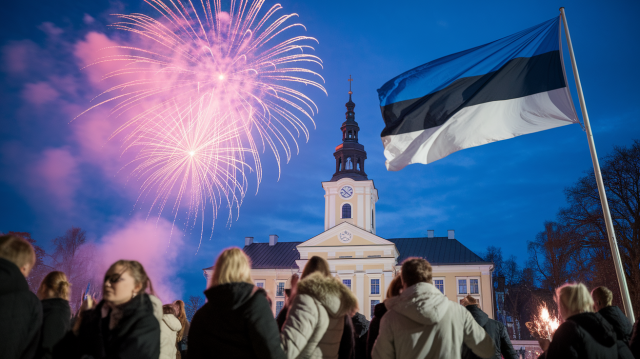Estonia Independence Day, celebrated annually on February 24, commemorates the declaration of independence in 1918, marking the establishment of the Republic of Estonia. This day honors the resilience and determination of the Estonian people in their pursuit of sovereignty and freedom. It is a time to reflect on the nation’s history, celebrate its cultural heritage, and recognize the enduring values of independence and unity.
Why Is It Celebrated?
Estonia Independence Day is celebrated to honor the proclamation of the Estonian Declaration of Independence, known as the Manifesto to the Peoples of Estonia. This historic event marked Estonia’s emergence as a free and independent state after centuries of foreign rule. The day serves as a reminder of the struggles and sacrifices made by Estonians to secure their liberty, fostering a sense of national pride and unity.
Cultural Significance
The day reflects Estonia’s rich cultural traditions and national identity. It symbolizes resilience, self-determination, and the triumph of freedom over oppression.
Unique Traditions:
- Flag-Hoisting Ceremonies: The day begins with a ceremonial raising of the Estonian flag at Pikk Hermann Tower in Tallinn and other locations across the country.
- Military Parade: A grand parade featuring Estonian Defense Forces and NATO allies takes place in Freedom Square, showcasing military strength and solidarity.
- Cultural Events: Open-air concerts, church services, and community gatherings celebrate Estonian culture and history.
- Presidential Reception: The President hosts a gala event where state honors are bestowed upon distinguished individuals.
Social Impact
Estonia Independence Day brings people together through shared celebrations that strengthen national bonds. Public events like parades and concerts foster a sense of community while highlighting Estonia’s journey toward freedom. The day also serves as an opportunity to educate younger generations about their nation’s history.
The Importance of It
This day is significant not only for its historical importance but also for its role in uniting Estonians in celebration of their hard-won independence. It underscores themes of perseverance, unity, and national pride while offering a platform for reflection on past struggles and future aspirations.
Educational Value
Independence Day provides an opportunity to learn about Estonia’s history, from its declaration of independence in 1918 to its re-establishment of sovereignty in 1991 following decades under Soviet rule. Educational initiatives often include museum exhibitions, documentaries, and discussions that highlight key moments in Estonia’s fight for freedom.
Emotional Connection
The observance fosters deep emotional connections among Estonians by honoring those who fought for independence. Stories of resilience during times of occupation resonate deeply with participants, creating a shared sense of pride and gratitude.
The Origin of It
The origins of Estonia Independence Day lie in the adoption and public reading of the Manifesto to the Peoples of Estonia on February 23–24, 1918. Despite challenges such as German occupation and later Soviet annexation, February 24 has remained a symbol of hope and determination for Estonians.
Historical Events:
- The Manifesto to the Peoples of Estonia was first read publicly on February 23, 1918, in Pärnu before being distributed in Tallinn on February 24.
- The War of Independence (1918–1920) secured Estonia’s sovereignty through victory over Soviet forces.
- The Treaty of Tartu (1920) formally recognized Estonia’s independence.
Evolution Over Time:
While initially focused on commemorating independence from Soviet Russia in 1918, modern celebrations also acknowledge Estonia’s re-emergence as a sovereign state following the Singing Revolution in 1991.
How to Celebrate
Here are meaningful ways to observe Estonia Independence Day:
- Attend flag-hoisting ceremonies or watch the military parade.
- Participate in cultural events such as concerts or exhibitions.
- Learn about Estonian history through museums or documentaries.
- Share reflections on social media using relevant hashtags.
- Spend time with family and friends celebrating national pride.
Conclusion
Estonia Independence Day is a powerful reminder of the resilience and determination that define the nation’s history. By celebrating this occasion, individuals honor past sacrifices while embracing values that continue to inspire unity and hope for future generations. Let us join in meaningful celebrations that highlight both Estonia’s heritage and its enduring spirit.











